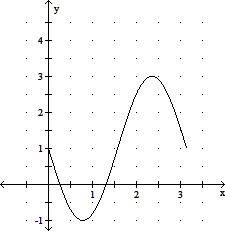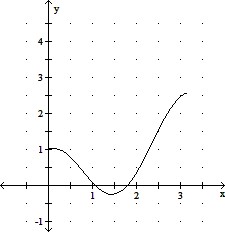Multiply the polynomials using a special product formula. Express the answer as a single polynomial in standard form.(x + 13)2
A. x2 + 26x + 169
B. x2 + 169
C. x + 169
D. 169x2 + 26x + 169
Answer: A
You might also like to view...
Graph the equation. Include the coordinates of any local extreme points and inflection points.y = x + cos 2x, 0 ? x ? ?
A. local minimum: 
local maximum: 
inflection point: 

B. local minimum: (1.444, -0.246)
local maximum: (0.126, 1.031)
inflection points: (0.785, 0.393), (2.356, 1.178)
C. no local extrema
inflection point: 

D. local minimum: 
local maximum: 
inflection points:  ,
, 

Solve the problem.If the Hamilton Method is used to apportion legislative seats to three states with the initial and revised populations given in the table, then one of the states loses a seat to another if the number of seats being apportioned is 100.  Which state loses a seat to which state, and does the Population Paradox occur?
Which state loses a seat to which state, and does the Population Paradox occur?
A. b loses a seat to a, no B. a loses a seat to b, no C. a loses a seat to b, yes D. b loses a seat to a, yes
Solve the given system of equations algebraically.3x2 - 4y2 = -242x2 + 5y2 = 53
A. x = 2, y = 3; x = 3, y = 2; x = -2, y = -3; x = -3, y = -2 B. x = 2, y = -3; x = 2, y = 3 C. x = 2, y = 3; x = -2, y = 3; x = 2, y = -3; x = -2, y = -3 D. x = -2, y = -3; x = -3, y = -2
If y' = k, where k is a non-zero constant, then y =
a. (k^2)/2 + C b. (k^2)x/2 + C c. kx + C d. kx^2 + C